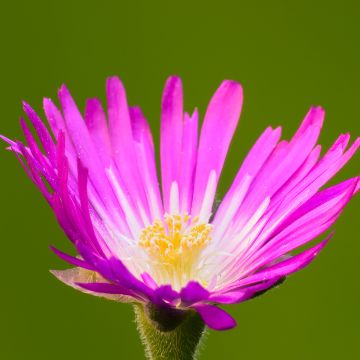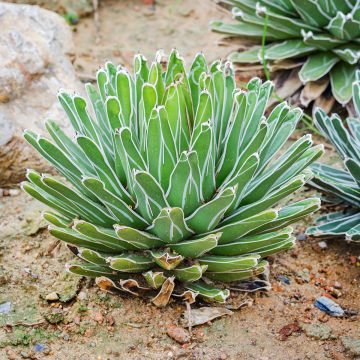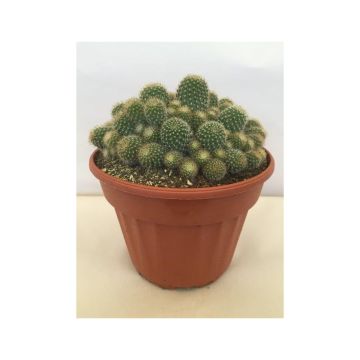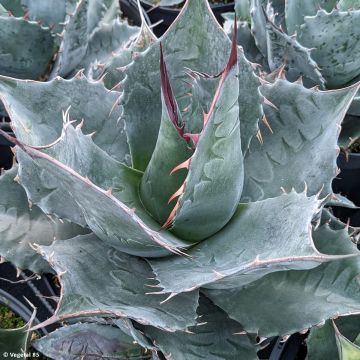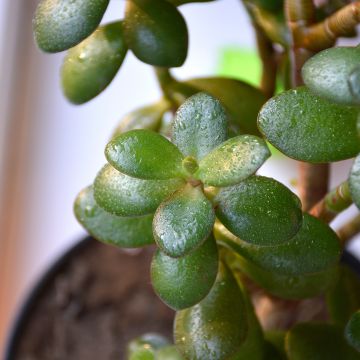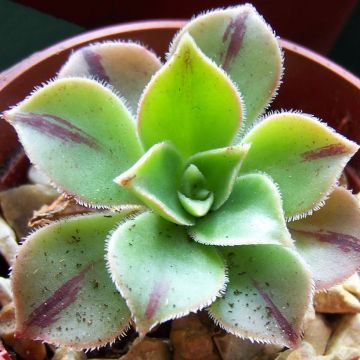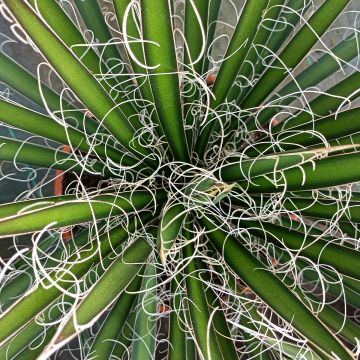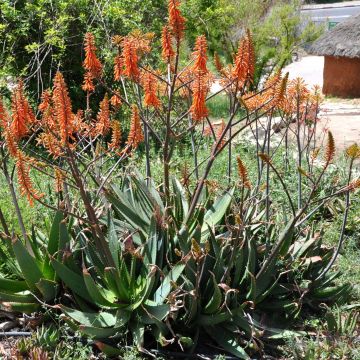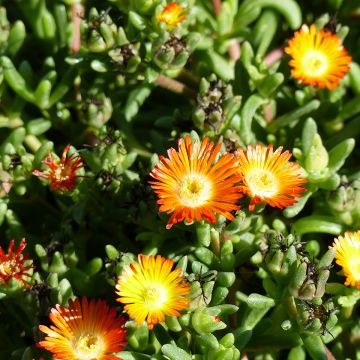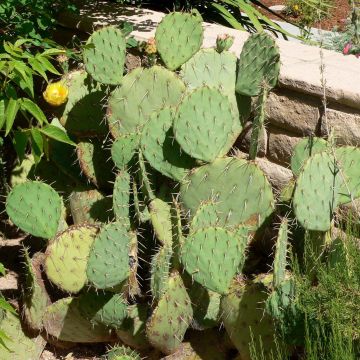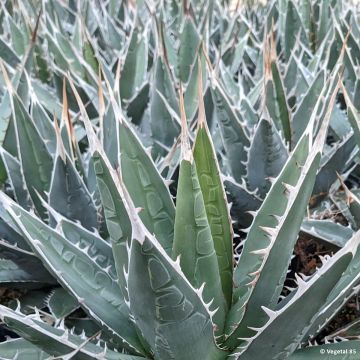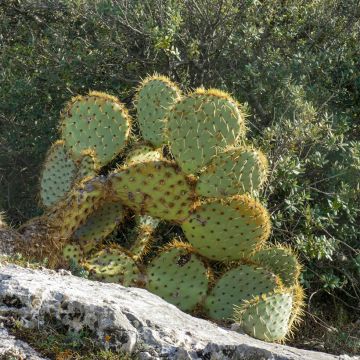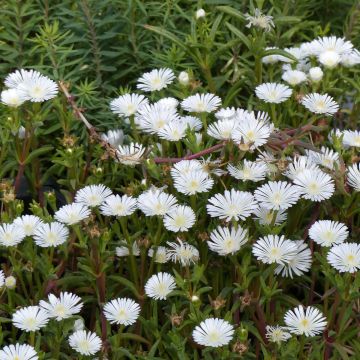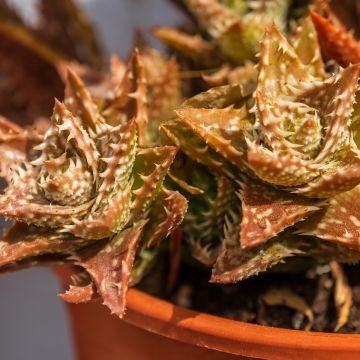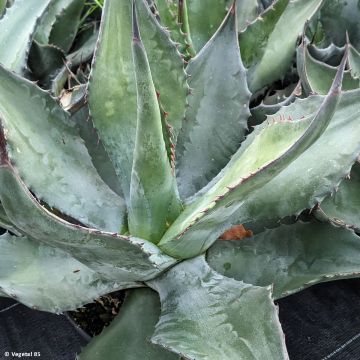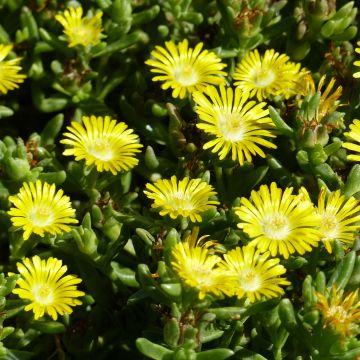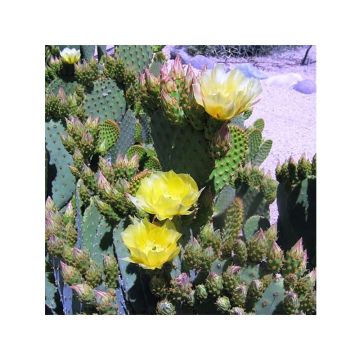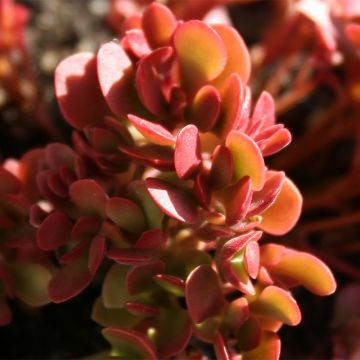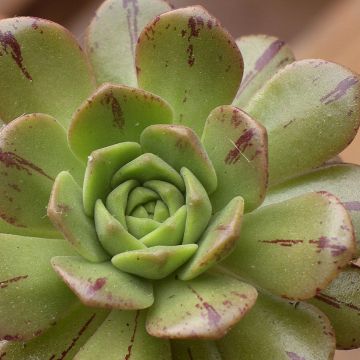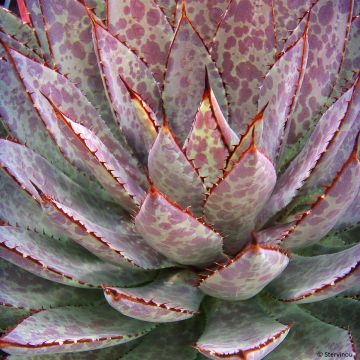Plantfit
Log in / Register
Existing customer?
New customer?
Create an account to track your orders, access our customer service and, if you wish, make the most of our upcoming offers.
My Account
Hello
Shipping country and language
Your country of residence may be:
For a better user experience on our website, you can select:
Your shipping country:
Andorra
Austria
Belgium
Bulgaria
Croatia
Czechia
Denmark
Estonia
Finland
France
Germany
Greece
Hungary
Iceland
Ireland
Italy
Latvia
Lithuania
Luxembourg
Monaco
Netherlands
Poland
Portugal
Romania
Slovakia
Slovenia
Spain
Sweden
Switzerland
Language:
French
English
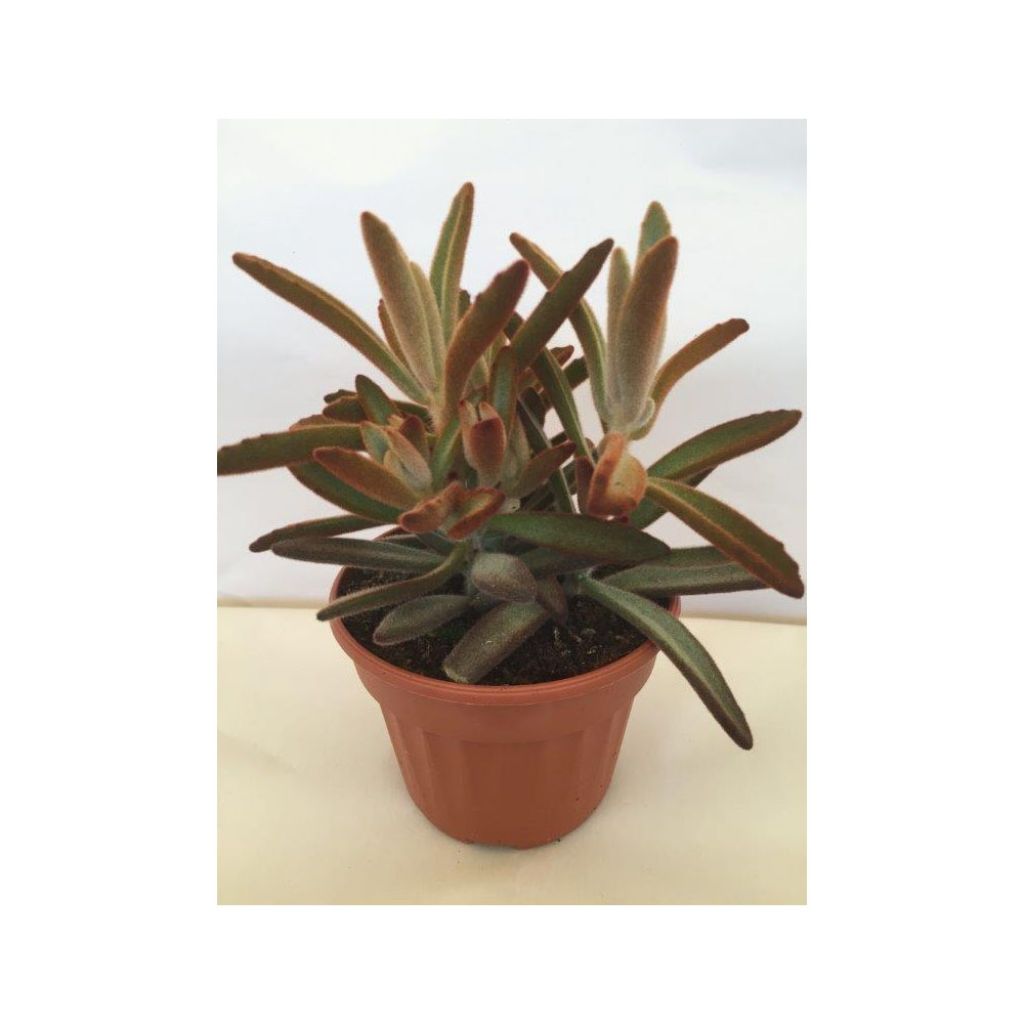

Kalanchoe tomentosa
Kalanchoe tomentosa
Kalanchoe tomentosa
Panda Plant, Chocolate Soldier, Pussy Ears
Order in the next for dispatch today!
Dispatch by letter from €3.90.
Delivery charge from €5.90 Oversize package delivery charge from €6.90.
More information
This item is not available in your country.
Select delivery date,
and select date in basket
This plant carries a 12 months recovery warranty
More information
We guarantee the quality of our plants for a full growing cycle, and will replace at our expense any plant that fails to recover under normal climatic and planting conditions.
From €5.90 for pickup delivery and €6.90 for home delivery
Express home delivery from €8.90.
Does this plant fit my garden?
Set up your Plantfit profile →
Description
Kalanchoe tomentosa, commonly known as the panda plant, is a very beautiful succulent plant forming a clump of elongated, thick, blue-green foliage, covered with a silvery-white velvet and marginated with brown-orange tips that darken with age. This perennial succulent native to Madagascar forms a small upright bush that withstands drought well and is easily cultivated in a pot that can be stored in a bright and cool room during winter, in regions with frosts. High luminosity and well-draining, not too rich, rocky to sandy substrate guarantee compact growth and an even thicker down with more intense colour contrasts.
Kalanchoe tomentosa belongs to the vast Crassulaceae family. It is a succulent perennial native to central Madagascar where it grows on the granitic soils of the Ambositra region. It withstands drought well but does not survive below -2°C (28.4°F). In its natural habitat, its upright and bushy bush can reach a height of 1m (3ft). Here, it will be more compact and should be cultivated in a pot outside mild climate regions, in full sun or partial shade in well-draining, mineral-rich soil mixed with a little sand. It should not be too dry during the growing season. However, avoid the scorching afternoon sun, especially in hot regions.
Kalanchoe tomentosa is a bushy perennial plant with succulent stems and leaves, covered with a thick, silvery white down with brown-orange margins. It is nicknamed the "panda plant" because of its bushy appearance and elongated spoon-shaped foliage. It forms a small clump that is 40cm (16in) tall and 20cm (8in) wide. It forms one or more vertical stems measuring 0.5 to 1cm (0.4in) in diameter, bearing grey-blue-green leaves that are 2 to 10cm (1 to 4in) long and 1 to 2cm (1in) wide. They are elliptical, elongated, opposite, and spirally arranged. They are covered with a thick layer of silvery-white hairs that become denser in hot and dry climates. The foliage sometimes has a slightly crenate margin and a pointed tip, which are enhanced by its edge with brown-orange hairs that turn dark brown when mature. This plant flowers in spring, but rarely in indoor cultivation. A symbol of wealth and prosperity in Madagascar, its flowering is unique with loose and upright panicles of small upright bell-shaped reddish-purple flowers, 1 to 2cm (1in) long and 1cm (0.4in) in diameter. They have rolled-up petal edges revealing a bright yellow-green throat.
In warm and dry regions, Kalanchoe tomentosa will find its place in a dry and sunny rockery or on a wild bank. Elsewhere, it can be planted in a pot that should be stored when the first frosts arrive. Stop watering until the vegetation resumes in spring. It can be planted with other succulent plants such as sedums, purslanes, and echeverias to create miniature dry gardens, or it can be placed in a large pot on a veranda or window sill.
Flowering
Foliage
Plant habit
Botanical data
Kalanchoe
tomentosa
Crassulaceae
Panda Plant, Chocolate Soldier, Pussy Ears
Madagascar
Planting and care
Plant Kalanchoe tomentosa in full sun or partial shade in light, well-draining soil with a mineral tendency, that is sandy to rocky. However, it thrives better in very bright exposure where it will maintain a more compact habit and thicker, more colourful foliage. Not hardy, it does not tolerate temperatures below -2°C (28.4°F). It can be grown outdoors in warm and dry regions, avoiding afternoon sun. Elsewhere, grow it in a pot with a substrate for succulent plants, which should be kept dry throughout winter in a bright room between 5 and 10°C (41 and 50°F). Excessive humidity in winter can greatly reduce the hardiness of this plant. Water from April to October, allowing the substrate to dry between waterings.
Planting period
Intended location
Care
This item has not been reviewed yet - be the first to leave a review about it.
Haven't found what you were looking for?
Hardiness is the lowest winter temperature a plant can endure without suffering serious damage or even dying. However, hardiness is affected by location (a sheltered area, such as a patio), protection (winter cover) and soil type (hardiness is improved by well-drained soil).

Photo Sharing Terms & Conditions
In order to encourage gardeners to interact and share their experiences, Promesse de fleurs offers various media enabling content to be uploaded onto its Site - in particular via the ‘Photo sharing’ module.
The User agrees to refrain from:
- Posting any content that is illegal, prejudicial, insulting, racist, inciteful to hatred, revisionist, contrary to public decency, that infringes on privacy or on the privacy rights of third parties, in particular the publicity rights of persons and goods, intellectual property rights, or the right to privacy.
- Submitting content on behalf of a third party;
- Impersonate the identity of a third party and/or publish any personal information about a third party;
In general, the User undertakes to refrain from any unethical behaviour.
All Content (in particular text, comments, files, images, photos, videos, creative works, etc.), which may be subject to property or intellectual property rights, image or other private rights, shall remain the property of the User, subject to the limited rights granted by the terms of the licence granted by Promesse de fleurs as stated below. Users are at liberty to publish or not to publish such Content on the Site, notably via the ‘Photo Sharing’ facility, and accept that this Content shall be made public and freely accessible, notably on the Internet.
Users further acknowledge, undertake to have ,and guarantee that they hold all necessary rights and permissions to publish such material on the Site, in particular with regard to the legislation in force pertaining to any privacy, property, intellectual property, image, or contractual rights, or rights of any other nature. By publishing such Content on the Site, Users acknowledge accepting full liability as publishers of the Content within the meaning of the law, and grant Promesse de fleurs, free of charge, an inclusive, worldwide licence for the said Content for the entire duration of its publication, including all reproduction, representation, up/downloading, displaying, performing, transmission, and storage rights.
Users also grant permission for their name to be linked to the Content and accept that this link may not always be made available.
By engaging in posting material, Users consent to their Content becoming automatically accessible on the Internet, in particular on other sites and/or blogs and/or web pages of the Promesse de fleurs site, including in particular social pages and the Promesse de fleurs catalogue.
Users may secure the removal of entrusted content free of charge by issuing a simple request via our contact form.
The flowering period indicated on our website applies to countries and regions located in USDA zone 8 (France, the United Kingdom, Ireland, the Netherlands, etc.)
It will vary according to where you live:
- In zones 9 to 10 (Italy, Spain, Greece, etc.), flowering will occur about 2 to 4 weeks earlier.
- In zones 6 to 7 (Germany, Poland, Slovenia, and lower mountainous regions), flowering will be delayed by 2 to 3 weeks.
- In zone 5 (Central Europe, Scandinavia), blooming will be delayed by 3 to 5 weeks.
In temperate climates, pruning of spring-flowering shrubs (forsythia, spireas, etc.) should be done just after flowering.
Pruning of summer-flowering shrubs (Indian Lilac, Perovskia, etc.) can be done in winter or spring.
In cold regions as well as with frost-sensitive plants, avoid pruning too early when severe frosts may still occur.
The planting period indicated on our website applies to countries and regions located in USDA zone 8 (France, United Kingdom, Ireland, Netherlands).
It will vary according to where you live:
- In Mediterranean zones (Marseille, Madrid, Milan, etc.), autumn and winter are the best planting periods.
- In continental zones (Strasbourg, Munich, Vienna, etc.), delay planting by 2 to 3 weeks in spring and bring it forward by 2 to 4 weeks in autumn.
- In mountainous regions (the Alps, Pyrenees, Carpathians, etc.), it is best to plant in late spring (May-June) or late summer (August-September).
The harvesting period indicated on our website applies to countries and regions in USDA zone 8 (France, England, Ireland, the Netherlands).
In colder areas (Scandinavia, Poland, Austria...) fruit and vegetable harvests are likely to be delayed by 3-4 weeks.
In warmer areas (Italy, Spain, Greece, etc.), harvesting will probably take place earlier, depending on weather conditions.
The sowing periods indicated on our website apply to countries and regions within USDA Zone 8 (France, UK, Ireland, Netherlands).
In colder areas (Scandinavia, Poland, Austria...), delay any outdoor sowing by 3-4 weeks, or sow under glass.
In warmer climes (Italy, Spain, Greece, etc.), bring outdoor sowing forward by a few weeks.
